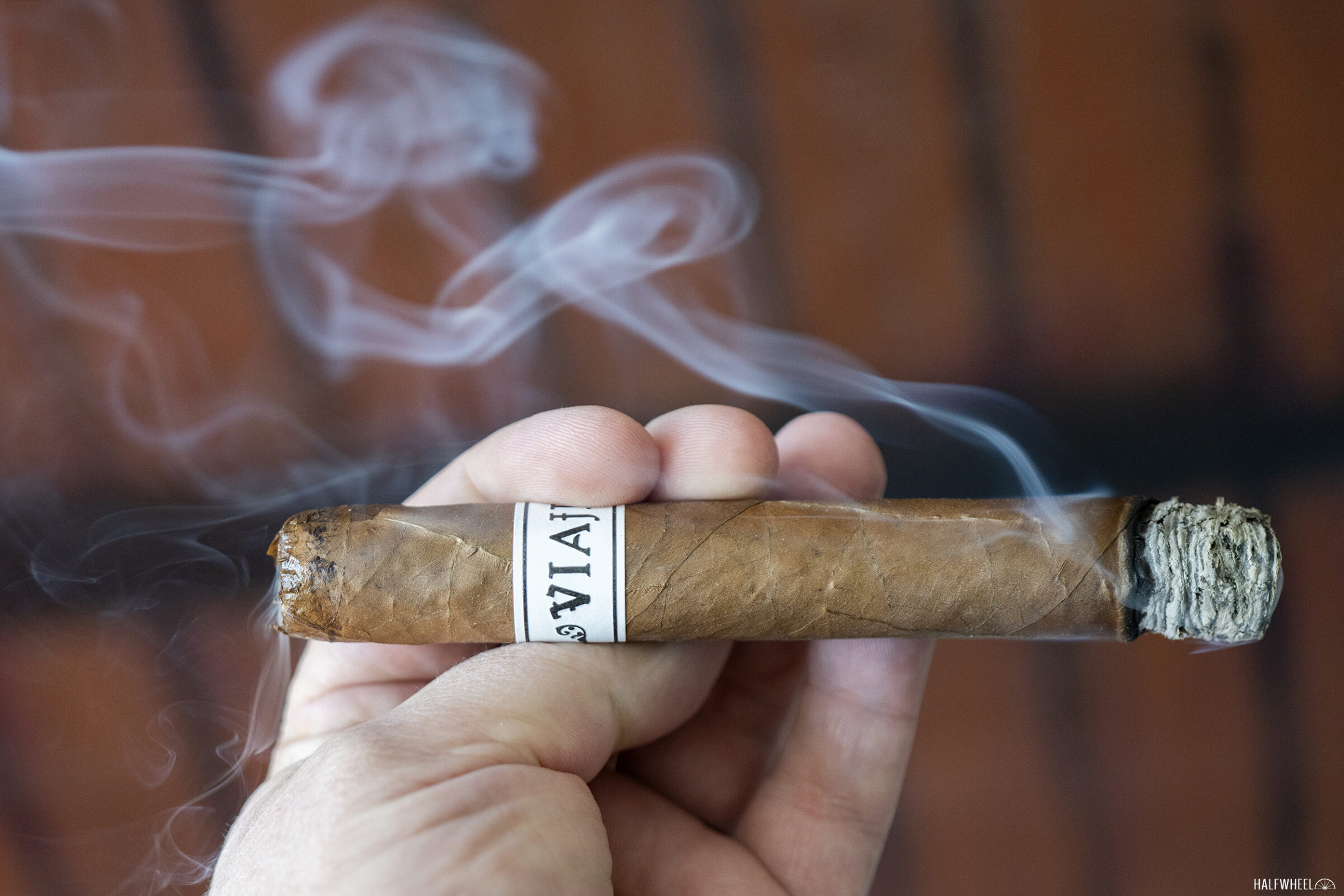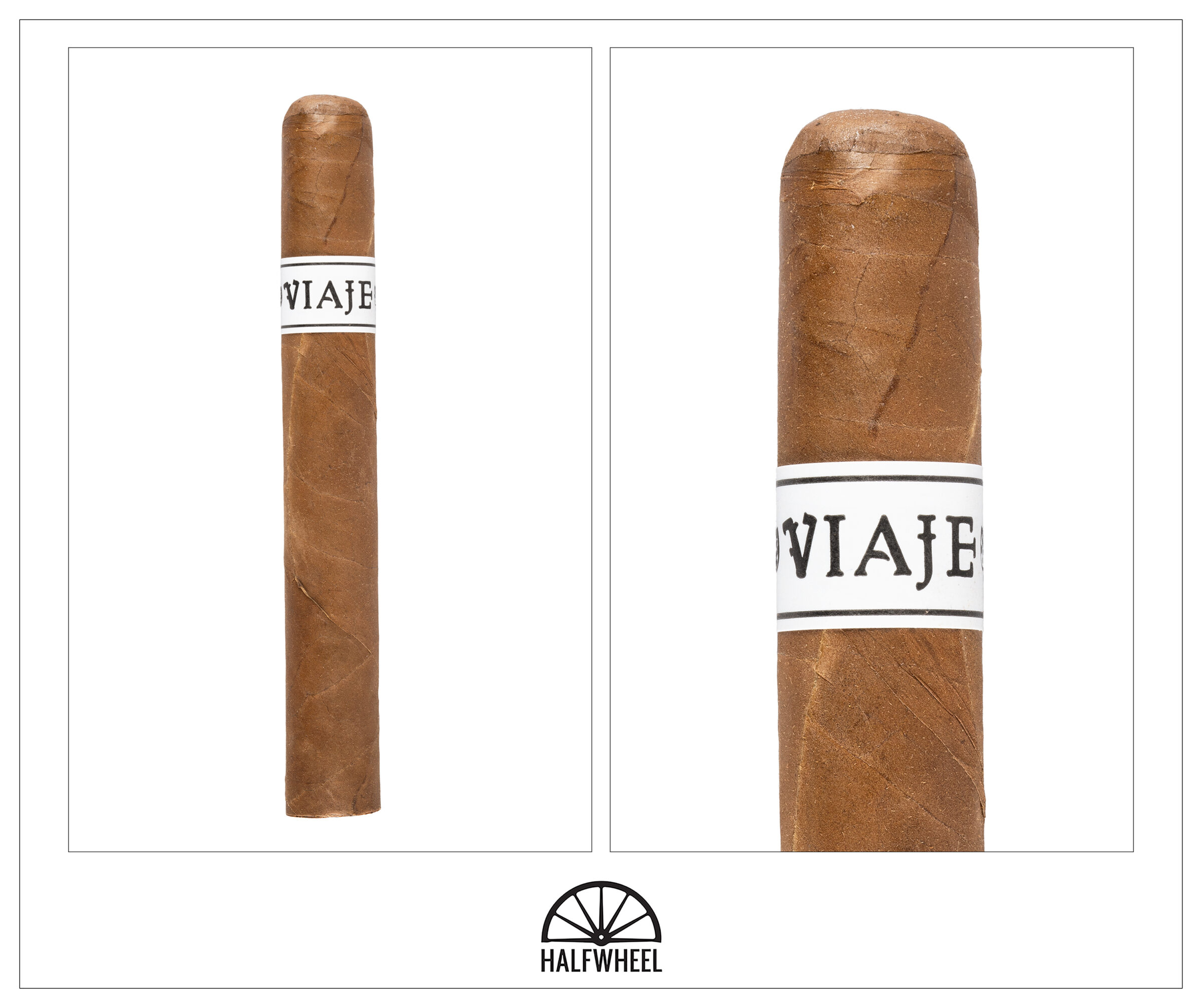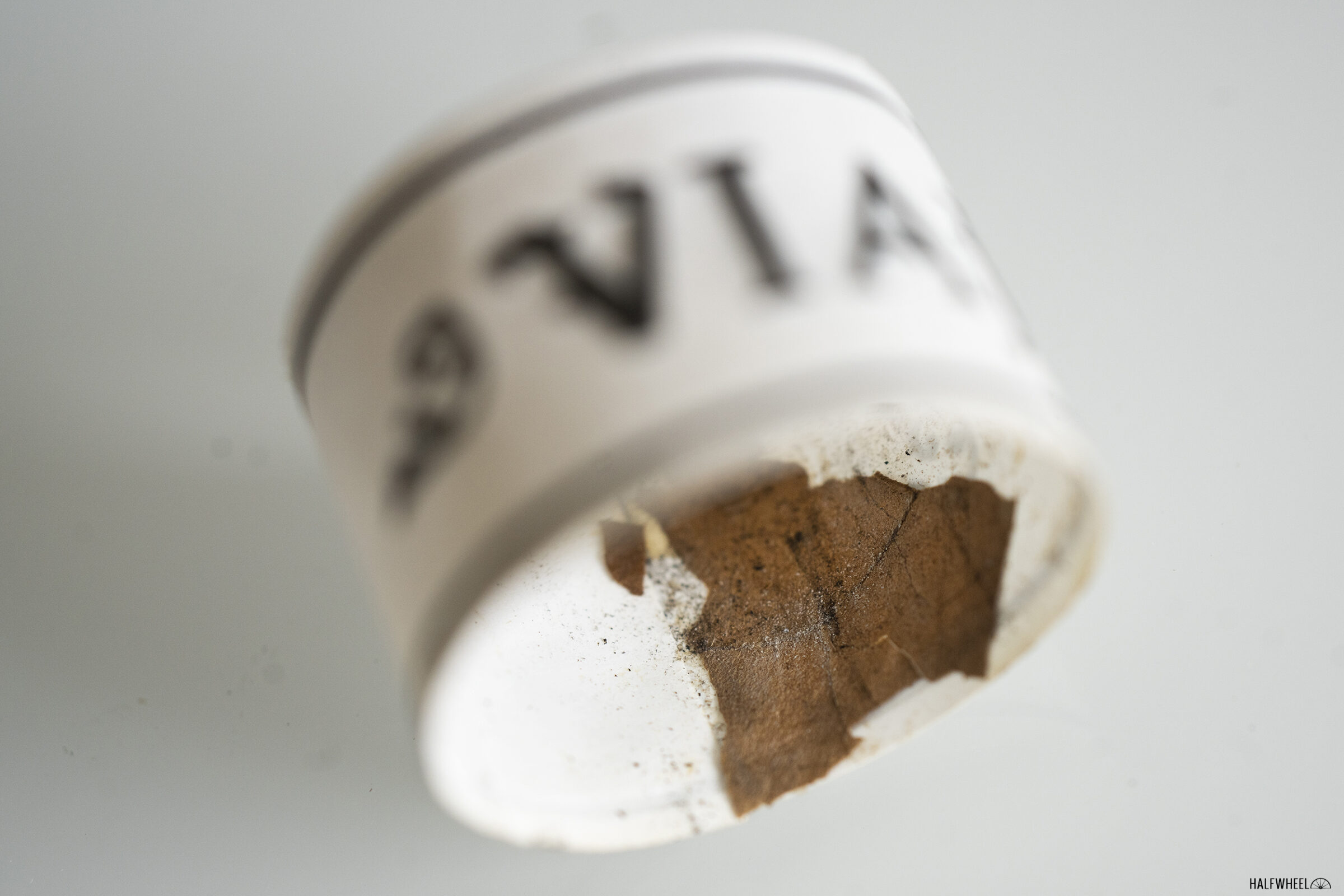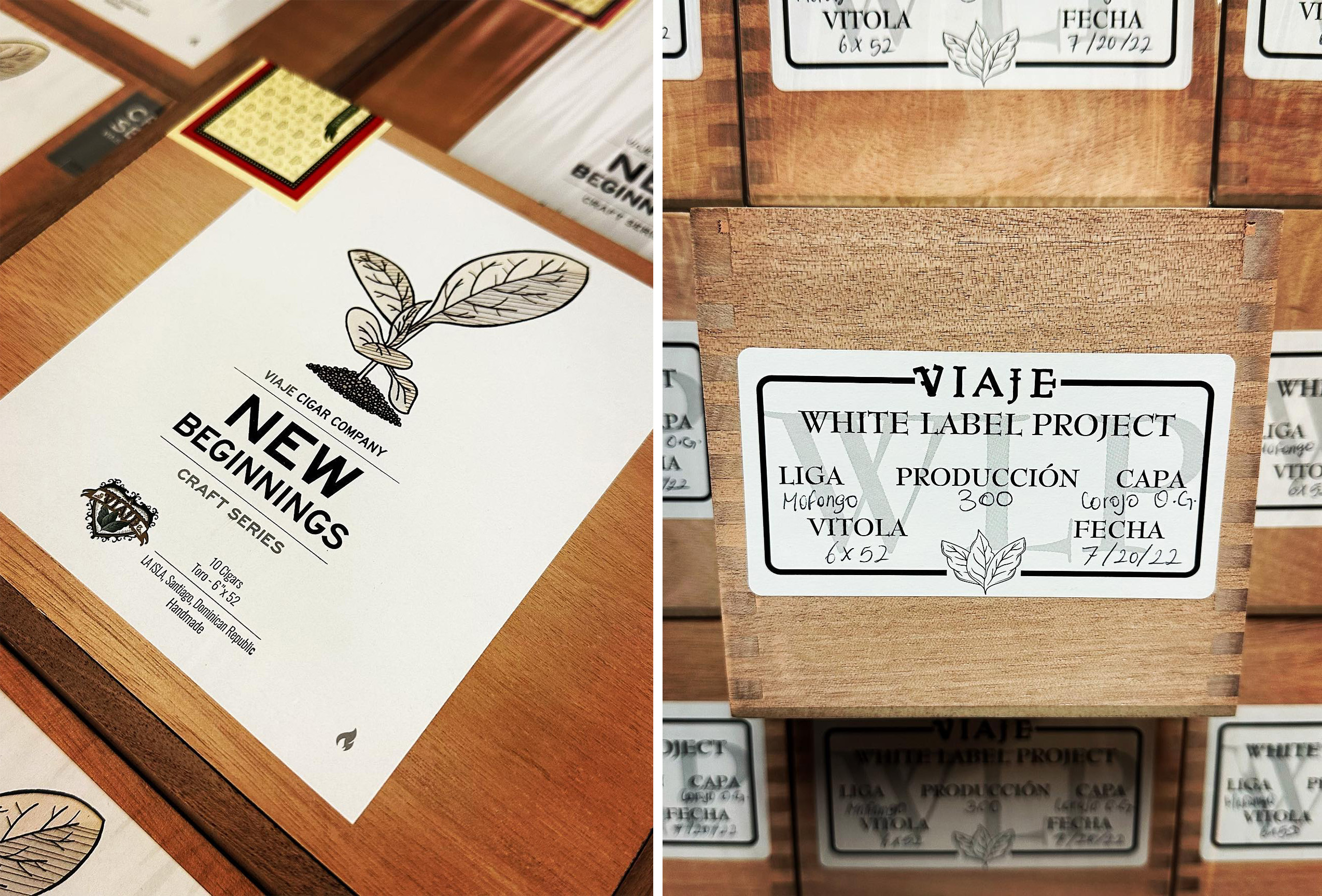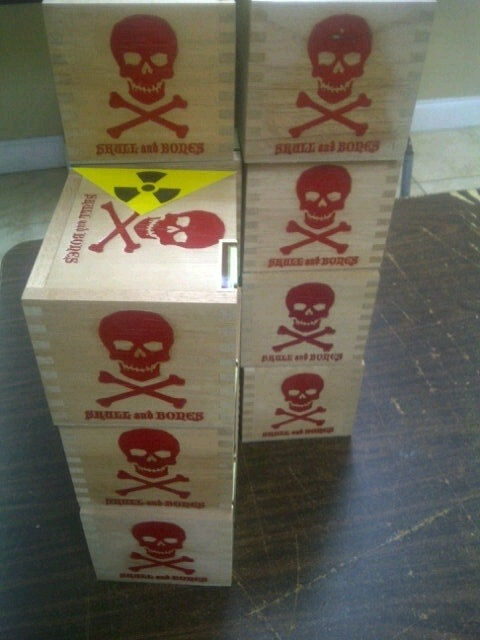In early 2011, Viaje released the first of what would become one of the company’s longest-running series. Named White Label Project (WLP), the series began as a loose collection of cigars that Viaje deemed to not fit into one of the company’s more defined series for any number of different reasons. However, in recent years the line has become an incubator of sorts that is used to launch new cigars before they get their own branding.
Earlier this year, Viaje shipped its newest addition to the WLP line named Mofongo, a 6 x 52 toro made with Ecuadorian corojo wrapper covering a Dominican binder and filler tobaccos grown in the Dominican Republic and Nicaragua. The Mofongo gets its name from a popular dish throughout the Caribbean that uses mashed plantains as the base, with garlic, olive oil, chicarrón, and other ingredients added in and then generally served alongside a beef broth.
“Since first sitting at the drawing board, over a year has passed waiting for these new projects to arrive,” the company wrote in its social media posts announcing the cigar. “We experimented with incredible tobaccos, some of which we had never used before. We hope you will agree that patience has been rewarded.”
Along with the Craft Series New Beginnings, the Mofongo is one of the first Viaje cigars to be made at TABACALERA LA iSLA, which was opened in December 2020 by Hostos Fernández Quesada. Pricing is set at $9.68 per cigar, with production limited to 300 boxes of 25 cigars—a total run of 7,500 sticks—and boxes started shipping to retailers in February.
- Cigar Reviewed: Viaje WLP Mofongo
- Country of Origin: Dominican Republic
- Factory: TABACALERA LA iSLA
- Wrapper: Ecuador (Corojo)
- Binder: Dominican Republic
- Filler: Dominican Republic & Nicaragua
- Length: 6 Inches
- Ring Gauge: 52
- Vitola: Toro
- MSRP: $9.68 (Box of 25, $242)
- Release Date: February 2023
- Number of Cigars Released: 300 Boxes of 25 Cigars (7,500 Total Cigars)
- Number of Cigars Smoked For Review: 3
A light cinnamon brown-colored wrapper greets me as I remove the Viaje WLP Mofongo from its cellophane, and after a physical inspection, it is hard not to notice just how smooth that wrapper is to the touch. There is a noticeable lack of oil as well as some very obvious veins running up and down the lengths of all three cigars, and each has some nice give when squeezed. Aromas from the wrappers include strong but generic nuttiness, barnyard, roasted coffee beans, woodiness, dark chocolate, yeast and vanilla sweetness. However, the scents from the feet are quite a bit sweeter, with chocolate nougat leading peanut shells, raisins, creamy cedar, earth and leather. After straight cuts, the cold draws bring flavors of salted peanuts, sweet cedar, anise, dry hay, coffee grounds and slight cinnamon.
The mineral saltiness from the cold draw is one of the first things I notice as I light the feet of the Mofongos, although notes of bitter espresso and black pepper are not far behind. A main combination of peanuts and cedar takes over the top spots in the profile, followed by toasted bread, earth, dry straw, leather tack and a slight vegetal flavor that comes and goes. There is a small amount of white pepper on the retrohale that works well with some graham cracker sweetness that is also present, although neither seems to be increasing much as the first third comes to a close. Flavor hits a solid medium by the end of the first third, while both the body and strength are a bit behind at a point halfway between mild and medium. In terms of construction, there is nary an issue with the draws, smoke production or burn line for any of the three cigars so far.
There are some changes in the profile of the Viaje during the second third, starting with the main flavors, which have morphed into a combination of toasted bread and cedar. Additional notes of cocoa nibs, espresso beans, leather tack, dry cereal and slight anise flit in and out at various points, while the amount of both the graham cracker sweetness and white pepper on the retrohale remains relatively unchanged compared to the first third. Flavor remains at a solid medium, but the body has increased to hit a point just under the medium mark while the strength passes into solid medium territory. Unfortunately, the burn on two cigars run into enough trouble to necessitate a couple of quick corrections with my lighter to stay on track, but the draws and smoke production remain problem-free through the second third.
Other than a noticeable increase in body and strength, the final third of the Viaje is a virtual carbon copy of the previous third: the combination of cedar and toasted bread continues to be the top flavors in the profile, easily outpacing secondary notes of bitter espresso beans, cocoa nibs, gritty earth, leather tack, generic nuts and cinnamon. There is not much change on the retrohale either, as the combination of white pepper and graham cracker sweetness remains about the same level until I put the nubs down with about an inch remaining. Flavor ends the cigar at a solid medium, but both the body and strength increase to land at a point just over the medium mark. Construction-wise, two cigars again have issues with their burn lines that need minor corrections—the other one is razor sharp in that regard—but the draws and smoke production remain excellent until their respective ends.
Final Notes
- TABACALERA LA iSLA has produced or is currently producing cigars for several other companies that may sound familiar, including Warped, Cabal, Casa 1910, Matilde, and La Sirena, among others.
- While the vast majority of the WLP creations have used the signature white background with “Viaje” in black text, there have been a small number of releases that have bucked that trend. For example, the White Label Project Super Shot 12 Gauge released in 2013 was the first to have no band at all while the Atlantic 20th Anniversary WLP 20th Limited Edition Toro from 2016 featured gold text instead of black.
- Along with the above, the bands on all three of my Mofongos were extremely difficult to remove, and I even had a massive piece of the wrapper come off with one of them. Thankfully it did not cause any significant construction or unraveling issues, but it is definitely something to be aware of if you are smoking this cigar.
- The three cigars I smoked for this review had some of the most consistent weights, lengths and ring gauges we have seen since we started taking measurements.
- The cigars smoked for this review were purchased by halfwheel.
- Final smoking time for the three cigars averaged one hour and 52 minutes.
Since the line debuted 12 years ago, there have been some really, really good WLP cigars released and some that were not so great. The WLP Mofongo falls somewhere near the middle, highlighted by an extremely approachable profile full of peanuts, toasted bread and cedar along with some white pepper and graham cracker sweetness on the retrohale. Having said that, the fact that it is approachable comes at a cost, namely that the blend is fairly linear when it comes to transitions, especially the latter two-thirds of the cigar. The overall construction was decent enough and the slightly-higher-than-medium strength never threatened to derail the balance, but in the end, the Mofongo will most likely be one of the multitude of cigars I enjoy while I am smoking it, only to forget about it as better blends come along.

